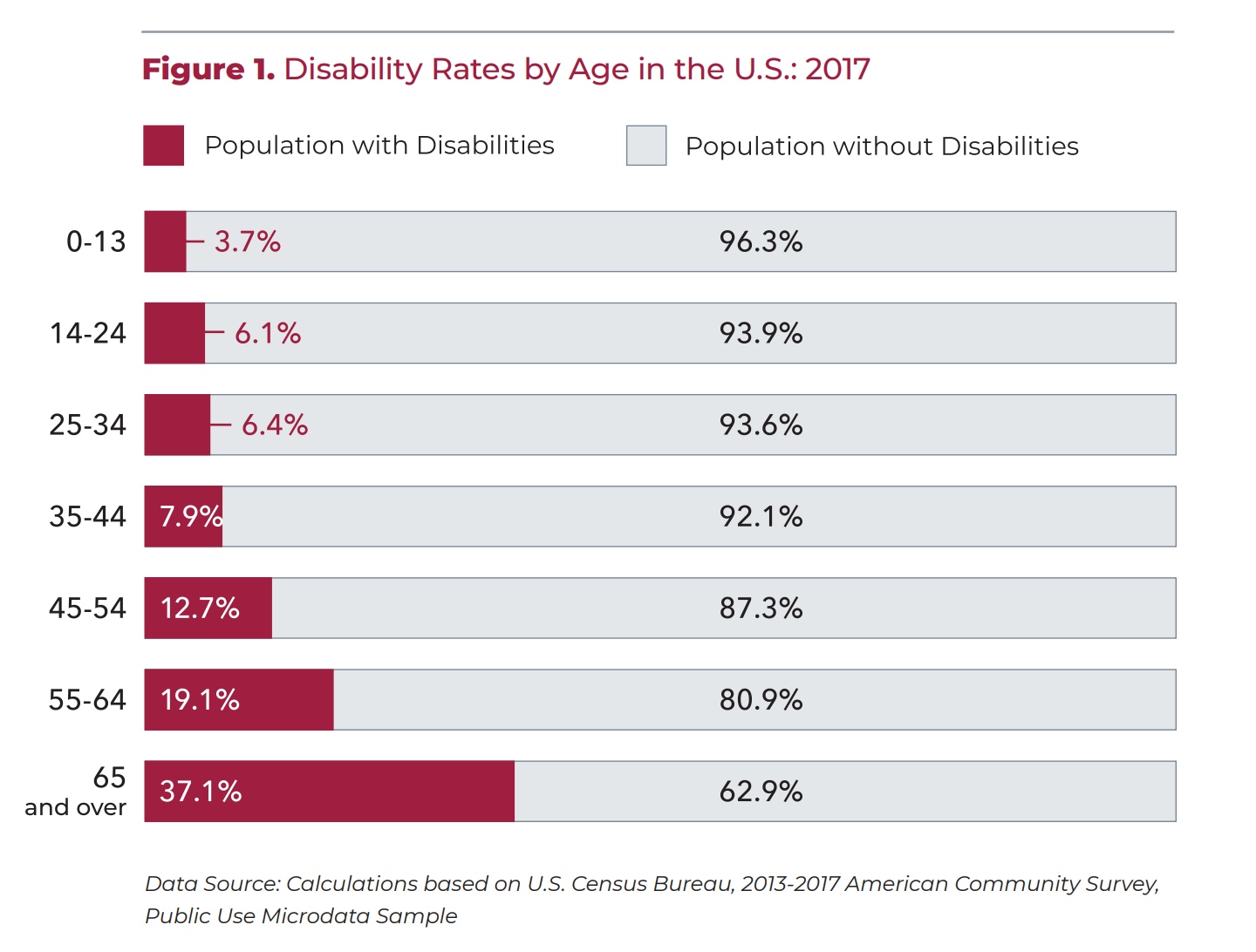State Data Reports: Youth and Young Adults with Disabilities
What do data tell us about transition age youth (ages 14-24)?
How do the education and employment outcomes of youth and young adults with disabilities compare to those of youth without disabilities? What proportion of transition age youth with disabilities are living in poverty? And what proportion are disconnected from school and work?
The results vary from state to state, but no state has closed the gaps between youth with and without disabilities in education or employment. Despite federal and state policies, youth with disabilities are less likely than their nondisabled peers to complete high school, enter and complete college, and obtain a job. These youth are also more likely to live in poverty and are less likely to remain connected to school and work settings.
Failure to engage, support, and prepare young people with disabilities has long-term effects on their potential for competitive wage jobs and community inclusion. The loss to society is more than financial; young people with disabilities contribute creativity, innovation, and new perspectives throughout the culture and civic discourse.
To support greater understanding of how youth with disabilities are faring, IEL produced twelve state-specific data reports that highlight education, employment, and poverty related outcomes for youth and young adults with and without disabilities (ages 14-24). The reports also specify the proportions of youth with and without disabilities who are not engaged in school or employment (these youth are often referred to as opportunity youth). These reports examine local data that can help service providers and state leaders to determine where there is a need for services and plan for greater statewide and local collaboration to serve youth and families in those areas. (See IEL’s Youth Transition Report for national data on this population.)
 What is different about these reports?
What is different about these reports?
While other reports present information about children (under age 18) or adults (ages 18 and over), the state data reports focus on the 14-24-year-old age group—youth and young adults with disabilities. Federal and state policy and funding support the successful transition of this population through education and into careers; however, statistics are not typically reported for the 14-24 age population. IEL produced these reports to provide state snapshots of outcomes for this group and to reflect the gaps that remain between youth and young adults with and without disabilities. By analyzing variations in outcomes across local areas, the reports make it possible to identify communities within a state that may require more assistance.
How can I use these state data reports in my work?
State data reports are a tool for increased understanding of the youth transition population at the state and local level. Youth serving agencies and policy makers may use these reports to analyze the needs of the youth population and inform service planning and policies aimed at reducing the gaps. Agencies can also use these reports to provide professional development to staff on how to better understand and use data in planning. For example, IEL and the Virginia Department of Aging and Rehabilitative Services (DARS) discussed the state report and how state and local staff can make use of the tool here. Contact us to learn more about these reports, how to obtain a report for your state, or how to use these reports as part of your ongoing professional development in data use and planning for program improvement.
Alaska | Arizona | Indiana | Iowa |
Michigan | Missouri | Nevada | New York |
North | Oklahoma | Vermont | Virginia |
These reports were produced by IEL as a contribution to the Vocational Rehabilitation Youth Technical Assistance Center (Y-TAC) that was funded by the U.S. Department of Education, Rehabilitation Services Administration (RSA) under grant #H264H150006 (CFDA #84.264Hx.











